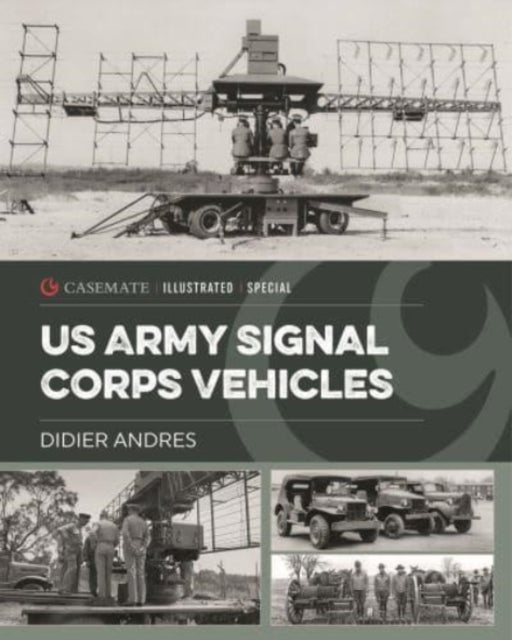US Army Signal Corps Vehicles 1941-45
Usually shipped within 24 hours
UK deliveries from £5.95
Delivery & Returns
Delivery & Returns
We use the Royal Mail, DHL Express or UPS for our customers. For UK addresses, deliveries under 10kg are a standard £4.95 via Royal Mail Tracked 48 Service. For orders over 10kg and overseas customers, postage is calculated for you at checkout once you have entered your postal address. This price, does not include any potential custom charges that may apply, depending on the product or destination, as every country has very different import duties / taxes. Online exclusive products (such as trainers) will be delivered to you directly from the printer, separate from other items in your order, but your postage fee covers ALL items in your order.
If you are unhappy with your purchase, please email shop@tankmuseum.org within fourteen (14) working days of receiving your goods, and return it to us at the address below, in its original condition, unopened (with any seals and shrink-wrap intact) and we will issue you a full refund or replace it. Goods must be returned at your own cost. If the item is faulty, you do not need to return it, we will send you a replacement free of charge.
Description
Description
By Didier Andres
Hardback
A comprehensive and fully illustrated account of all the vehicles needed to move, use, and maintain communications equipment vital to the success of the U.S. Army during World War II.
Including trucks, workshop trucks, vans and trailers all designed by the Signal Corps, described in technical detail and illustrated by hundreds of period photos. The Signal Corps was at the forefront of the technological development of communications throughout World War II.
Tasked with coordinating all American military activities, the Signal Corps initially had to rely on a communications landline network covering some 1 300 000 km. This was soon overtaken by radio communications. however adaptation remained a priority within the US Army Signal Corps for when landline networks were unavailable or radio silence had to be observed.
Almost every large piece of Signal Corps equipment required wheeled transport, and over a hundred vehicles and trailers would be specially designed, many associated with one particular radio or radar installation. This comprehensive and fully illustrated account covers radar and radio vehicles, plus specialised vehicles such as telephone repair trucks, mobile telephone switchboards and homing pigeon units, all described in technical detail and illustrated by hundreds of period photos.
![US Army Signal Corps Vehicles 1941-45 Book [variant_option4]](http://tankmuseumshop.org/cdn/shop/files/9781636240640.jpg?v=1755962766&width=1214)

![US Army Signal Corps Vehicles 1941-45 Book [variant_option4]](http://tankmuseumshop.org/cdn/shop/files/9781636240640.jpg?v=1755962766&width=88)
![Christmas Tank Museum Wrapping Paper - Two sheet pack Wrapping Paper [variant_option4]](http://tankmuseumshop.org/cdn/shop/files/DSC2318.jpg?v=1759225755&width=176)

![US Army Signal Corps Vehicles 1941-45 Book [variant_option4]](http://tankmuseumshop.org/cdn/shop/files/9781636240640.jpg?v=1755962766&width=640)



